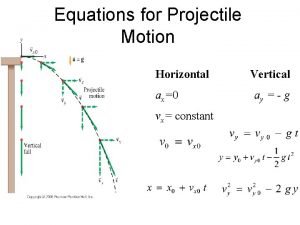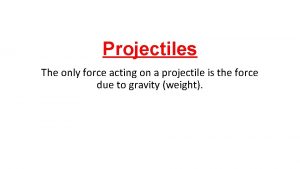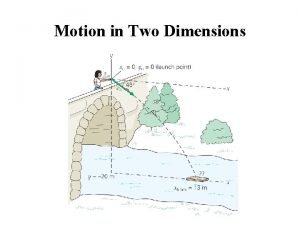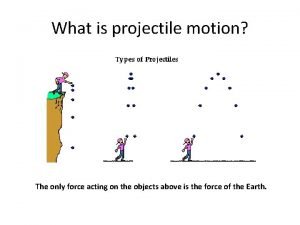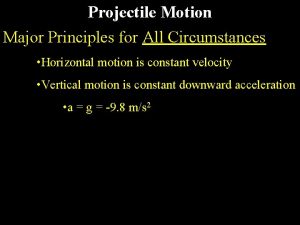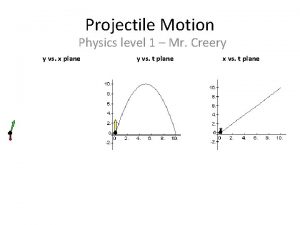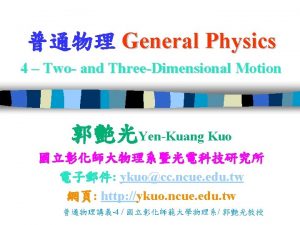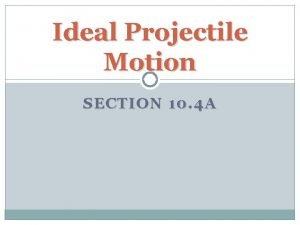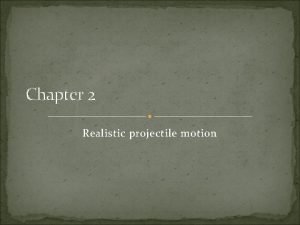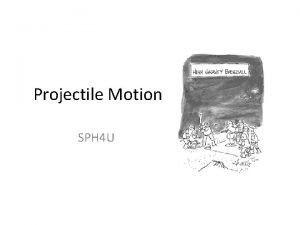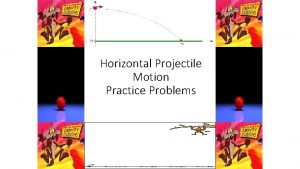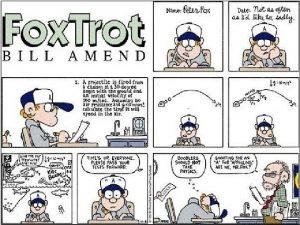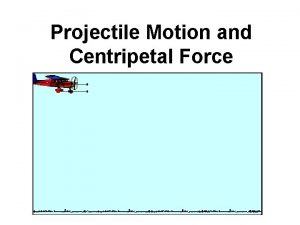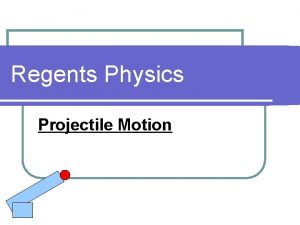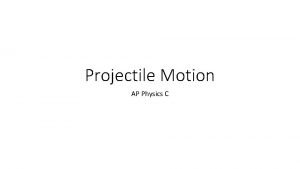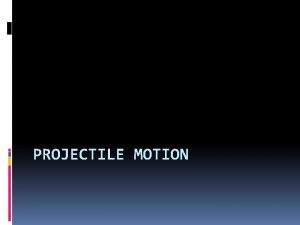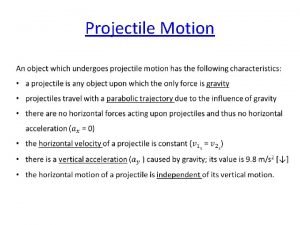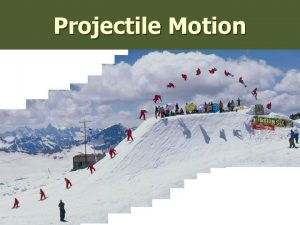Equations for Projectile Motion Horizontal ax0 vx constant












- Slides: 12

Equations for Projectile Motion Horizontal ax=0 vx= constant Vertical ay = - g

Steps in Solving Problems 1. Draw free-body diagram for every object that is ”free” 2. Select coordinate system such that one of the axis is along the direction of acceleration 3. Write out the equations of motion for the x and y coordinate: 4. Step 2 should guarantee that the sum of the forces in at all but one direction equals zero. 5. Solve the equations simultaneously


Non-Conservative Forces • If work is done by non-conservative forces: • The sign of WNC is very important • A motor adds energy so WNC is positive and E 2 > E 1 • Friction dissipates energy so WNC is negative and E 2 < E 1

Example 6 -5 (43) The roller-coaster car shown is dragged up to point 1 where it is released from rest. Assuming no friction, calculate the speed at points 2, 3, and 4. Let point be the height where P. E. = 0 Ch 6 5

Continued Example 6 -5 (43) The roller-coaster car shown is dragged up to point 1 where it is released from rest. Assuming no friction, calculate the speed at points 2, 3, and 4. Let point be the height where P. E. = 0 Ch 6 6


Conservation of Momentum F 12 F 21 In the collision of two isolated objects, the only forces are between the two objects—these are called internal forces. In this case: initial momentum = final momentum The total momentum of an isolated system of bodies remains constant.

Radial and Tangential Acceleration A point on a rotating wheel always has centripetal acceleration and it will have tangential acceleration if the wheel has angular acceleration.

Kinematic Equations for Uniformly Accelerated Motion The angular equations for constant angular acceleration are derived the same as for constant linear acceleration.

Rotational Dynamics Torque is necessary for angular acceleration This is expressed as where I is called the moment of inertia Compare this with Newton’s Second Law: • τ is the equivalent of force for rotational motion • I is the equivalent of mass for rotational motion

A 1. 5 kg mass is attached to a cord wrapped around a heavy pulley of mass 4. 00 kg and radius 33. 0 cm. The pulley is a solid cylinder. Calculate the acceleration of the mass. Example 8 -5 m
 Horizontal projectile motion
Horizontal projectile motion The only force acting in a horizontal projectile motion is
The only force acting in a horizontal projectile motion is Acceleration in two dimensions
Acceleration in two dimensions The only force acting in a vertical projectile motion is
The only force acting in a vertical projectile motion is Asymmetric parabola
Asymmetric parabola Projectile motion formula
Projectile motion formula What is kinematics
What is kinematics Horizontal range of projectile
Horizontal range of projectile Projectile motion equations
Projectile motion equations How to calculate projectile motion
How to calculate projectile motion Projectile motion newton's second law
Projectile motion newton's second law Realistic projectile motion
Realistic projectile motion Projectile motion equations
Projectile motion equations
